The Amazing Maser: The Jewel That Conquers Space
|
|
Early masers (microwave amplification by simulated emission of radiation), like the lasers (light amplification...), began life with the requirement of a rare earth-based mineral at its core - in this case a ruby. Early applications of the maser, as reported in this 1960 Popular Electronics article, were centered on radars. High amplification and high power was beyond the capability of common semiconductors like Si, GaAs, or GaN. Required substrate impurities, gate widths, and thermal control was well beyond the state of the art of the day. As always, the early pioneers like Dr. Charles H. Townes, inventor of the maser, accomplished incredible feats with rudimentary tools, including the venerable slide rule. Also see The Maser / Receiver Signals from Space in the November 1960 Electronics World. The Amazing Maser
Maser-operated radio telescope at the Naval Research Laboratory has a range of more than seven billion light years.
The inventor of the maser, Dr. Charles H. Townes (above left), of Columbia University, and J. P. Cedarholm of IBM inspect a gas maser clock which is used in scientific research.
Disassembled maser is shown at left; scientist R. W. DeGrasse of Bell Laboratories holds in his right hand the strip of synthetic ruby which provides the amplification. The cutaway view of a maser shows how the input signal weaves in and out of the row of pins next to the strip of ruby; each time the signal goes around a pin, additional energy is radiated. resulting in increased amplification.
Three Bell Labs scientists, Harold Seidel, H. E. D. Scovil, and George Feher, are shown here with one of their brain-children, an early solid-state maser.
Fig. 1. Radarscope picture of pulse and echo, with thermal noise along bottom of the trace.
Fig. 2. Radarscope picture of same pulse and echo, but without any thermal noise or "grass."
Fig. 3. Maser-operated radar has no thermal noise, allowing very weak echo to be received.
Fig. 4. On conventional radar, thermal noise completely swamps out echoes of low amplitudes.
The heart of the solid-state maser is a strip of semiconductor material - usually synthetic ruby - placed in a resonant chamber into which are piped the signal to be amplified and the so-called "pump" signal.
By Miles Dillard On February 10th of last year, eight scientists gathered at MIT's famous Lincoln Laboratory near Boston. They carefully checked over the powerful research radar installed there, then angled its huge dish antenna sharply into the afternoon sky. At exactly 2:21 p.m., a pulse shot out from the antenna in the direction of the planet Venus. Just under five minutes later, an echo so faint as to be hardly recognizable came back to earth. Man had made his first direct contact with the planets. The scientific breakthrough that made it possible for an electronic signal to complete the 55-million-mile round trip from Earth to Venus was the invention of the "maser." This amplifying device effectively makes radar sets up to 100 times more sensitive than they were before, vastly extending their range. The world's first true "atomic amplifier," the maser owes its amazing sensitivity to the fact that it actually harnesses the tremendous internal energy of the electron's spin. The "solid-state maser," to give it its full name, is an odd but deceptively simple-looking gadget. Its heart is a strip of synthetic jewel which is suspended in a tank of liquid helium and maintained at the almost unbelievable temperature of nearly 460°F below zero! Add a few lengths of waveguide-electronic plumbing to direct the radio waves in and out - and you've got the whole assembly. While the maser's most publicized triumphs to date have been associated with radar, its accomplishments have by no means been limited to this field. Searching Space. Columbia University's Dr. Charles H. Townes, who invented the maser, and scientists at the Naval Research Laboratory near Washington have built a maser-operated 50-foot radio telescope which has a range three and one half times as great as the best light telescopes - over seven billion light years! This has opened up for exploration a total volume of space about 40 times greater than that seen by the 200-inch Mount Palomar telescope and earlier radio telescopes. The great sensitivity of the new 50-foot "space eye" is already enabling astronomers to learn something about the surface of Venus for the first time. This has been perhaps the most mysterious of all the planets because it is eternally obscured by thick clouds. But the maser telescope can pick up its feeble surface radiation easily, and astronomers now know far more about it than ever before. They have recently learned, for example, that the surface of Venus is a sizzling 585°F - far too hot for the existence of life as we know it. But this is just the beginning. Dr. Frank D. Drake of the National Astronomy Observatory at Green Bank, West Virginia, predicts that within about a year a radio telescope with three times the range of the 50-foot unit at the Naval Research Laboratory and ten times the range of earlier radio telescopes will allow scientists to "see" the actual surface of Venus and to determine for the first time its speed of rotation - that is, the length of its days. This new instrument is already under construction at the West Virginia observatory site. Its gigantic dish antenna will be 600 feet in diameter; two football fields would fit end to end across its span. Not only will it "see" nearby planets more clearly, but its tremendous sensitivity will enable it to probe 30 to 40 times as much space as can now be explored with the 50-foot telescope. Its range may extend as far as 20 billion light years! Astronomers think they will even be able to observe the "edge of space," where radiation emitted at the time of the formation of the universe may perhaps be detected or where space may actually be seen to curve. "Such observations," says Dr. Townes, "will quite possibly indicate whether present ideas of an expanding universe are correct, as well as providing a means of checking other cosmological theories." One of the maser's most obvious applications is in the field of satellite communications. Since tons of fuel must be burned for every pound of satellite put into orbit, scientists use every conceivable trick to design the lightest possible equipment for space probes. With maser amplifiers one hundred times as sensitive as older types in ground listening posts, smaller and lighter transmitters can be installed in satellites. Smaller transmitters also use lighter batteries, saving more weight. Thermal Noise. The maser - this weird piece of frigid hardware - is able to perform its many tricks because its unique principle of operation virtually eliminates that old bug-a-boo, thermal noise. Why is this so important? Let's take a look at the maser's use in radar and find out. Figure 1 shows a radarscope with an echo from a nearby airplane. The echo is strong and clear. But notice the wiggly lines along the bottom of the scope trace. Radar operators call this irregular pattern "grass." Engineers call it thermal noise. If there were no thermal noise, the scope trace with the same echo would look like Fig. 2. Here, the transmitter pulse and the echo is unchanged; the only difference is that there is now no "grass," or thermal noise. It makes little difference whether or not the thermal noise is there, as long as we get a strong echo from a nearby target. But what about that echo from Venus? By the time a signal travels 55 million miles, there isn't much of it left. On a maser radarscope, the trace would look like Fig. 3. Without the maser, it would look like Fig. 4. Where is the echo? Completely blanked out by thermal noise. How does the maser do away with thermal noise? To answer this question, let's quickly review the cause of thermal noise. If you could look inside the tubes and wires of your hi-fi set, for example, you would see streams of electrons rushing along in orderly groups. This flow of electrons is the "signal" that eventually comes out of the speaker as music or speech. But here and there a few electrons, stirred up by the heat present in any circuit, scamper around aimlessly. This random movement generates a small but measurable current of its own, which comes out as noise. It is called thermal noise, or thermal agitation, since it is caused by heat: the more heat, the more noise. You can actually hear thermal noise on your hi-fi amplifier, just as you can see it on a radarscope. With no signal applied to your hi-fi set, turn up the volume control and put your ear next to the speaker .. The hissing sound you hear is thermal noise greatly amplified. Although such noise is rarely objectionable in hi-fi amplifiers, it seriously limits the range of radar, as we have seen. Since the maser does not depend on electron flow, there is little random noise created. And even the few stray electrons that would normally wander about are much less likely to do so when the maser is dipped in a chilling bath of liquid helium. At temperatures. close to absolute zero (-473°F), random electron movement becomes virtually non-existent. A radar echo from Venus, minute signals from a star six billion light years away, or a feeble message from a satellite with a small, light-weight transmitter can come right in without competing with amplifier noise. How the Maser Works Scientists tell us that materials such as synthetic ruby contain electrons spinning at different rates, or to be more accurate, at different "energy levels." Under normal conditions, most electrons are at the lowest energy level, which is called. "Energy Level 1." Fewer electrons are at Energy Lever 2, and still fewer at Energy Level 3. When an electron "falls" from a high level to a lower one, it gets rid of its excess energy by radiating that energy in the form of microwave signals. To illustrate how the maser works, a mechanical analogy can be used. This analogy describes the operation of the "3-level maser," the most common type. Let us represent Energy Level 1 by a tank of water, Energy Level 2 by a row of buckets, suspended above the tank, and Energy Level 3 by a still higher row of buckets. Valves in the bottom of the buckets on Energy Level 3 are arranged so that they automatically keep the buckets on Energy Level 2 full. Each bucket on Energy Level 2 has a sensitive valve on its bottom which can be opened by the slightest touch. The system also has a pump which pumps water from the tank, keeping the buckets on Energy Level 3 full, which in turn keeps the buckets on Energy Level 2 full. The maser is now ready to operate. Tiny drops of water shooting into the system from the outside will hit the valves on the bottom of the buckets on Energy Level 2, releasing large amounts of water. These small drops of water represent small incoming signals, which in actual masers cause the electrons on Energy Level 2 to drop to Energy Level 1, and thereby radiate their excess energy. The amount of energy they radiate is far more than the amount needed to trigger them. Therefore, a small signal coming into the maser is amplified into a large one. Because of complex technical considerations, it is easier in practice to "pump" electrons up to Energy Level 3 and let them drift down to Energy Level 2 than to pump them directly to Energy Level 2. The "pump" used in an actual maser is an oscillator operating at a frequency higher than the signal frequency to be amplified. In practice, the cavity in which the maser is placed must be resonant at the signal and pump frequencies. The gas maser is a "2-level maser," which operates on a slightly different but similar principle. The word "maser" stands for "Microwave Amplification by Stimulated Emission of Radiation." Spinning Electrons. When Dr. Townes invented the maser in 1954, he was not looking for a new type of amplifier. In the process of using radio waves to study the structure of gas molecules, he discovered that the energy of the spinning electrons in the gas could be tapped under certain conditions, and that it would give off microwave radiation similar to radar waves. Eventually he found a way to make the electrons radiate large amounts of energy when stimulated by small amounts, a reaction similar in some ways to a vacuum tube's action in controlling a large current flow with a small signal. Thus, a new amplifier working on an entirely new principle was born. Dr. Townes' first instrument was a "gas maser," as opposed to the solid-state maser mentioned earlier. One of its first applications was in the world's most accurate atomic clock. Because the energy radiated by the maser's electron spin vibrates at an extremely constant rate, he was able to build a clock regulated by these vibrations that was accurate to within one second in a hundred years! With similar clocks, scientists are now measuring the rotation of the earth so accurately that soon we will know if it is actually slowing down, as many think. The gas maser has also been used to confirm Einstein's theory of relativity concerning the velocity of light. Earlier attempts had been hampered by the lack of a timing device of sufficient accuracy. The maser clock enabled scientists to prove conclusively that the theory was correct. Although the gas maser operated perfectly in atomic clocks and a few other devices, it was not a particularly efficient amplifier, so investigators began looking around for other materials to which the principle of the maser could be applied. A team of Bell Telephone Laboratories scientists, headed by Dr. H. E. D. Scovil, constructed a series of successful designs which used semiconductor solids, some of them similar to those used in transistors. So far, synthetic ruby has proved to be one of the more effective materials, and many of today's atomic amplifiers are made of this material. Future Applications. The maser seems likely to be cast in a starring role when National Aeronautics and Space Administration and Bell Telephone scientists try to transmit high-frequency signals from coast to coast and across the Atlantic by bouncing them off satellites. (See "Communications Satellites-Key to World-Wide TV," POPULAR ELECTRONICS, March, 1960.) Specially designed maser amplifiers and powerful antennas are now under construction at Bell Labs in New Jersey. And when world-wide TV becomes a reality, the maser will play an important part. If the space probe scheduled to be fired into orbit around Venus this year is successful, scientists on earth will listen to its cryptic messages with maser receivers. And, of course, masers will be on hand when man himself takes the big step into space and wants to communicate over vast distances back to his home planet. New uses, some based on startlingly original concepts, are proposed regularly. For example, work has begun on the development of masers operating at frequencies so high that they are actually visible light. Techniques for generating infrared and visible light rays and for transmitting them like radio waves - although still far in the future - may open up entirely new applications for the maser. Are masers likely to show up in our home TV and radio receivers? Well, there are some tremendous technical problems that have to be solved first. For example, the earth gives off feeble radiations which can jam the super-sensitive maser. Maser devices that have been successful so far overcome this problem by using sharply directional antennas pointed up and away from the earth's radiation. Consequently, maser-operated home television receivers seem unlikely until the day comes when our TV stations broadcast from satellites. Although at this time we can only guess where future developments may lead, we can be sure that the maser and its applications will grow increasingly valuable - both here on earth and in the empty vastness or space when man leaves his planet to explore the stars.
Posted February 7, 2019 (original 7/24/2012) |
|

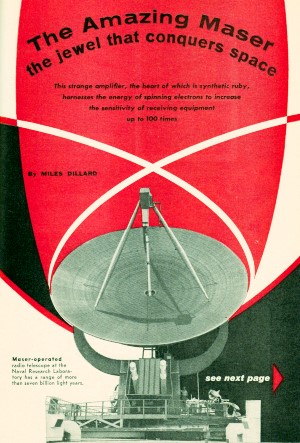
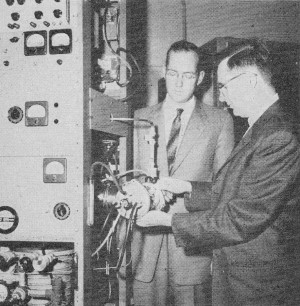
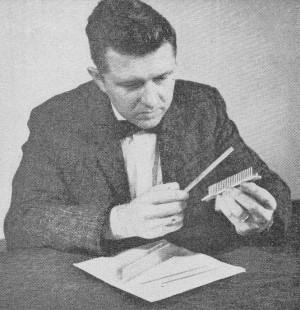
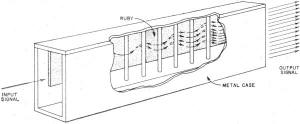
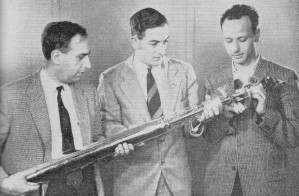
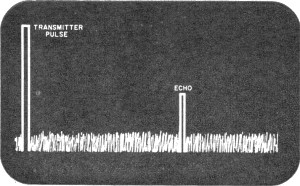
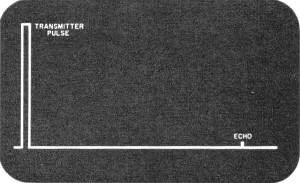

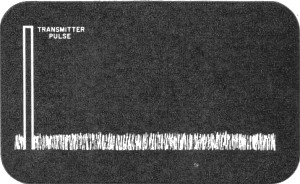
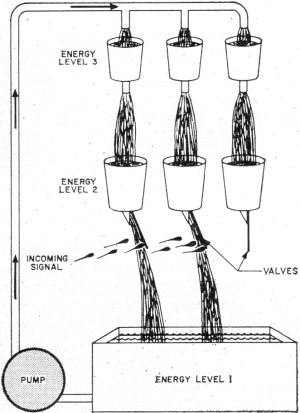
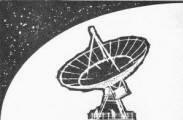 This strange
amplifier, the heart of which is synthetic ruby, harnesses the energy of spinning
electrons to increase the sensitivity of receiving equipment up to 100 times
This strange
amplifier, the heart of which is synthetic ruby, harnesses the energy of spinning
electrons to increase the sensitivity of receiving equipment up to 100 times